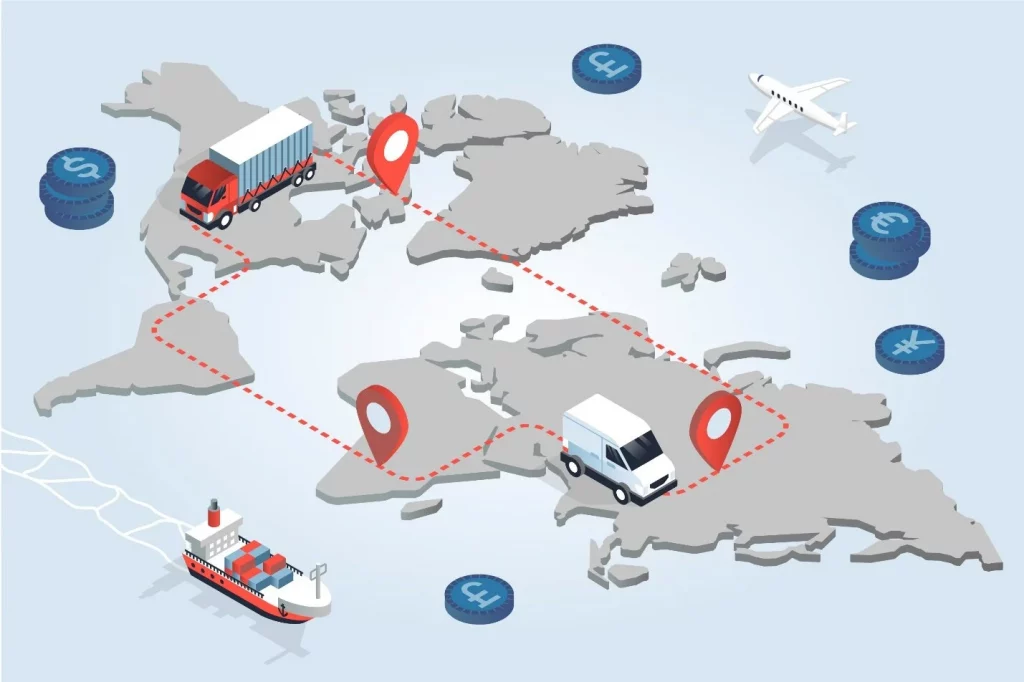Curious how reshoring or nearshoring can benefit your business? Contact us to learn how Optiflow can streamline your transition.
Contact us today to learn more about how our Services can drive success for your business.
Published Sep 2024
Subscribe to receive latest resources on supply chain design
For years, companies outsourced their manufacturing to far-off places like China and Vietnam to cut costs. But things have shifted. Events like the pandemic, trade wars, and rising shipping costs have forced businesses to rethink how and where they make their products. Two solutions that have become popular are reshoring (bringing production back home) and nearshoring (moving it closer but not all the way). And while these strategies sound great, deciding which one is right isn’t as simple as picking the cheaper option. Many businesses are turning to advanced optimization software to help them make smart decisions.
Reshoring means relocating production back to the company’s home country. Imagine an American company that used to make its products in China but now moves everything back to the U.S. It’s all about cutting risks and being closer to customers. Recently, Apple has made moves to bring production of certain devices, like the MacBook, back to the U.S. While it still relies heavily on overseas production, this move shows a growing desire to diversify its supply chain.
But why make this move?
Nearshoring is a middle ground. Instead of bringing production all the way back, companies move it to a nearby country. For example, a U.S. company might move manufacturing from China to Mexico or Canada. This way, it’s still cheaper, but much closer than Asia. Recently Ford has embraced nearshoring, expanding its production in Mexico. This allows them to save on labor costs while still being close to their North American market.
Why nearshore?

There are several reasons why more companies are rethinking their supply chains today:
Global Supply Chain Disruptions
The COVID-19 pandemic brought to light the vulnerability of global supply lines. Numerous companies experienced severe delays, a scarcity of products, and rapidly increasing transportation expenses. Businesses can lessen their vulnerability to these kinds of worldwide shocks and strengthen their capacity for adaptation in the event of interruptions by relocating production closer to home
Rising Overseas Costs
Once the preferred locations for low-cost manufacturing, nations like China are no longer as affordable as they formerly were. Offshoring is becoming less attractive due to increased wages, more stringent laws, and other considerations. Businesses are beginning to look into options that let them cut expenses while remaining close to important markets
Trade Tensions
Ongoing trade wars, tariffs, and geopolitical instability are adding uncertainty and increasing costs for international production. Additionally, political conflicts, sanctions, and regional instability can further disrupt supply chains. To avoid these risks, many businesses are moving production to more stable and economically secure locations, either back home or to nearby countries.
Environmental Impact
With many businesses prioritizing sustainability more and more, nearshoring and reshoring present a chance to lessen their carbon footprint. Reduced fuel use and emissions from shorter transport distances help businesses achieve their environmental targets while also reaping the benefits of more effective operations.
Economic nationalism
Some countries are promoting policies that encourage domestic manufacturing and job creation.
Now, choosing between reshoring and nearshoring isn’t just a gut decision. Companies are increasingly turning to optimization software to model various scenarios and make data-driven decisions. Lambda, for example, offers its proprietary optimization tool, Optiflow, to help businesses navigate this complex process. Here’s how:
Here’s why companies are jumping on the reshoring and nearshoring train:
Of course, no strategy is perfect. Reshoring and nearshoring come with their own challenges:
As global supply chains continue to face disruptions, the appeal of reshoring and nearshoring has never been stronger. By relocating production closer to home or to nearby regions, companies can mitigate risks, improve supply chain resilience, and reduce lead times. However, the decision between reshoring and nearshoring isn’t purely about cost—it’s about creating a more agile, sustainable, and responsive supply chain.
This is where advanced optimization software like Optiflow becomes invaluable. It helps businesses navigate the complexities of site selection, inventory management, and cost analysis, ensuring that decisions are based on data rather than guesswork. Whether bringing production back home or moving it to a nearby country, companies that leverage technology to guide these shifts will be well-positioned to thrive in an increasingly unpredictable global market.
Contact us today to learn more about how our Services can drive success for your business.
We’re excited to discuss what problems you are facing and how can you make your existing supply chain more efficient by continuously designing it.